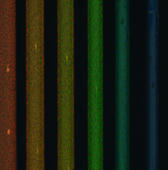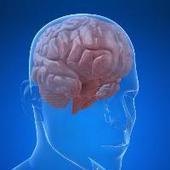Seitdem die Forscher der Firma OpenAI ihr Chatbot ChatGPT für registrierte Nutzer öffentlich zugänglich gemacht hat, wird viel über darüber in den Medien diskutiert. Für die, die es noch nicht mitbekommen haben: ChatGPT ist ein Sprachmodell, eine künstliche Intelligenz (KI), mit der man sich nicht nur unterhalten kann, sondern die auch erstaunlich realistische Inhalte verfasst. Im Prinzip ist ChatGPT ein Textgenerator: man gibt eine Frage ein und erhält eine Antwort. Was unter anderem für die aktuelle Faszination sorgt, ist die hohe Qualität der Antworten, die ChatGPT liefert.
Learn more / En savoir plus / Mehr erfahren:
https://www.scoop.it/topic/21st-century-innovative-technologies-and-developments/?&tag=ChatGPT
https://www.scoop.it/t/21st-century-innovative-technologies-and-developments/?&tag=AI
https://www.scoop.it/topic/21st-century-innovative-technologies-and-developments/?&tag=Ethics



 Your new post is loading...
Your new post is loading...













Seitdem die Forscher der Firma OpenAI ihr Chatbot ChatGPT für registrierte Nutzer öffentlich zugänglich gemacht hat, wird viel über darüber in den Medien diskutiert. Für die, die es noch nicht mitbekommen haben: ChatGPT ist ein Sprachmodell, eine künstliche Intelligenz (KI), mit der man sich nicht nur unterhalten kann, sondern die auch erstaunlich realistische Inhalte verfasst. Im Prinzip ist ChatGPT ein Textgenerator: man gibt eine Frage ein und erhält eine Antwort. Was unter anderem für die aktuelle Faszination sorgt, ist die hohe Qualität der Antworten, die ChatGPT liefert.
Learn more / En savoir plus / Mehr erfahren:
https://www.scoop.it/topic/21st-century-innovative-technologies-and-developments/?&tag=ChatGPT
https://www.scoop.it/t/21st-century-innovative-technologies-and-developments/?&tag=AI
https://www.scoop.it/topic/21st-century-innovative-technologies-and-developments/?&tag=Ethics